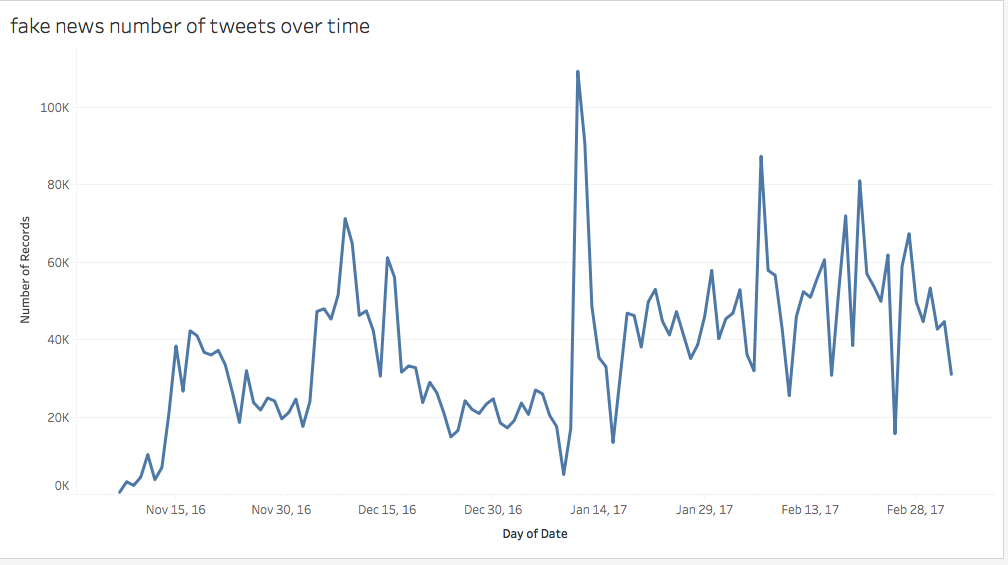Election Day – Early December 2016

In the days immediately following the November 8, 2016 general election, we see the first true uses of the term “fake news” across both social media and traditional media platforms. In the Twittersphere, we see a major uptick in the use of the term “fake news”, with nearly 40,000 tweets using the term beginning on November 15. In traditional print and digital news media during this time period, we also begin to see the use of the term “fake news”, with a peak of roughly 2,000 uses on November 21. Like Twitter, the first real spike in the use of “fake news” in the TV Archive data is also seen on November 15.
Facebook and Fake News
The context in which the use of the term “fake news” first appears across this range of media platforms is important to note. On November 15th, the New York Times ran an article titled “Google and Facebook Take Aim at Fake News Sites”. The impact on Twitter is immediate, with the hashtag “#facebook” quickly becoming the most used hashtag on that day in tweets that also contained the term “fake news” or the concurrent hashtag “#fakenews”. The New York Times Twitter account (@nytimes) is also the second-most mentioned username in the “#fakenews” dataset during this period, and the third-most mentioned among “fake news” data. The terms “internet social networking” are also the most commonly used among articles that also contain the phrase “fake news” in traditional print and digital media, as collected through LexisNexis. The terms “Facebook” and “Google” are also far more readily used in the TV Archive data during this period than in any other time period analyzed in this study.
Democracy and Fake News
A second spike in the use of the term “fake news”, particularly on Twitter, comes after Barack Obama’s speech on November 17, in which he decries fake news as a “threat to democracy”. By the next day we see the largest spike in the use of the term “fake news” across both Twitter datasets during this time period, as well as the largest spike in the usage of the term in the TV Archive (again, during this time period).
Sources of Fake News
It is important to note that, at this early moment in the current life of the term “fake news”, its use is deeply associated with intentionally fabricated stories, circulated largely through social media in one of two ways: either by unsuspecting consumers, or by ill-intentioned individuals or groups looking to alter the outcome of the election through whatever means necessary. It is also important to point out that Donald Trump has not yet used the term “fake news” during this time period, an event that happens on December 10th and arguably changes the entire meaning of the phrase.
| Analysis Overview |


